
The COMSOL Multiphysics® software comes with an extensive documentation set and comprehensive, context-sensitive help functionality. However, most of the documentation is available in English only. Wouldn’t it be convenient if you could use the built-in translation tools that some web browsers provide to make an instant translation of the COMSOL documentation into the language of your choice? This blog post describes how you can do just that to localize any part of the COMSOL documentation.
Displaying the COMSOL Documentation in the Browser of Your Choice
The COMSOL documentation is available in two different formats:
- The Help window in the COMSOL Desktop®, which provides context help for the selected node in the model tree and provides access to the full COMSOL documentation, including text searches. You open the Help window by pressing F1 or by selecting it from the File menu. From the Help window, you can display the documentation in an external browser by clicking the Show in External Browser button. Through the Preference settings, you can choose to always display the help contents in a web browser.
- The Documentation window, which is a separate window that provides access to the full COMSOL documentation set in HTML and PDF formats as a complete help desk. Through the Preference settings, the help desk contents in the Documentation window can be displayed in a web browser instead.
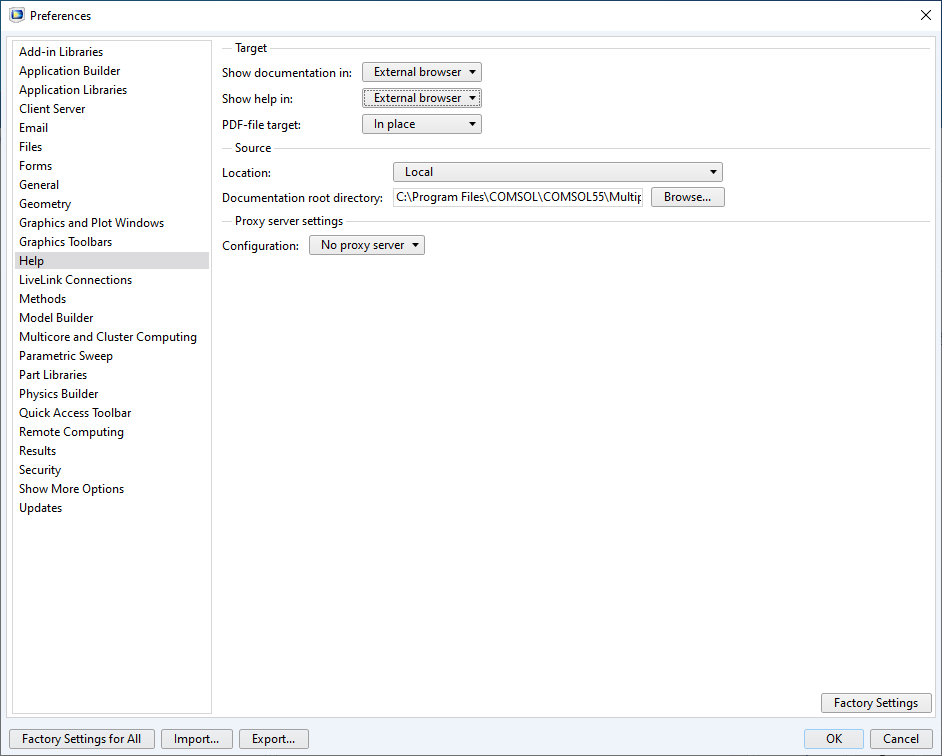
The Help page in the Preferences dialog box, where the preferences for showing documentation and help have been changed to be in an external browser.
Changing the Browser Used by the COMSOL® Software
By default, the COMSOL documentation uses the default web browser. If your default web browser does not support built-in translation of the webpage contents, you can make COMSOL instead use another web browser of your choice, such as Google Chrome™, which is a web browser that supports built-in translation.
To do so, open the Preferences dialog box and, on the General page, choose Custom from the Program list under Web browser. Then, browse or enter the path to the desired web browser’s executable file. In the screenshot below, the setting has been changed to use the Google Chrome™ browser, which is an installed web browser, but not the default web browser on that computer. The documentation and help will then be opened in Google Chrome™ when you choose to display the help in a web browser. Using Google Chrome™, you have access to built-in translation tools that can instantly translate the COMSOL documentation from English to another language of your choice.
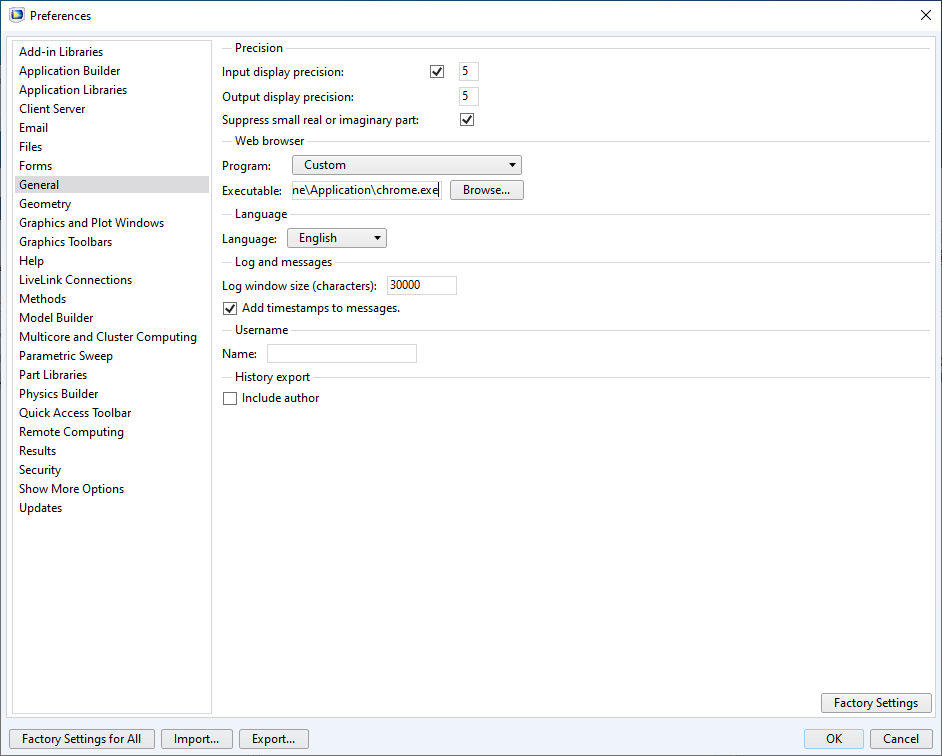
The Preference settings for the web browser set to use Google Chrome™ instead of the default web browser.
Translating the Contents to the Language of Your Choice
Using Google Chrome™, you can specify which languages to include, and specifically, which language to use when translating pages. You find those settings by selecting Languages under Advanced on the Settings page in Google Chrome™. In the screenshot below, Chinese (Simplified) has been added and chosen as the language to use when translating pages.
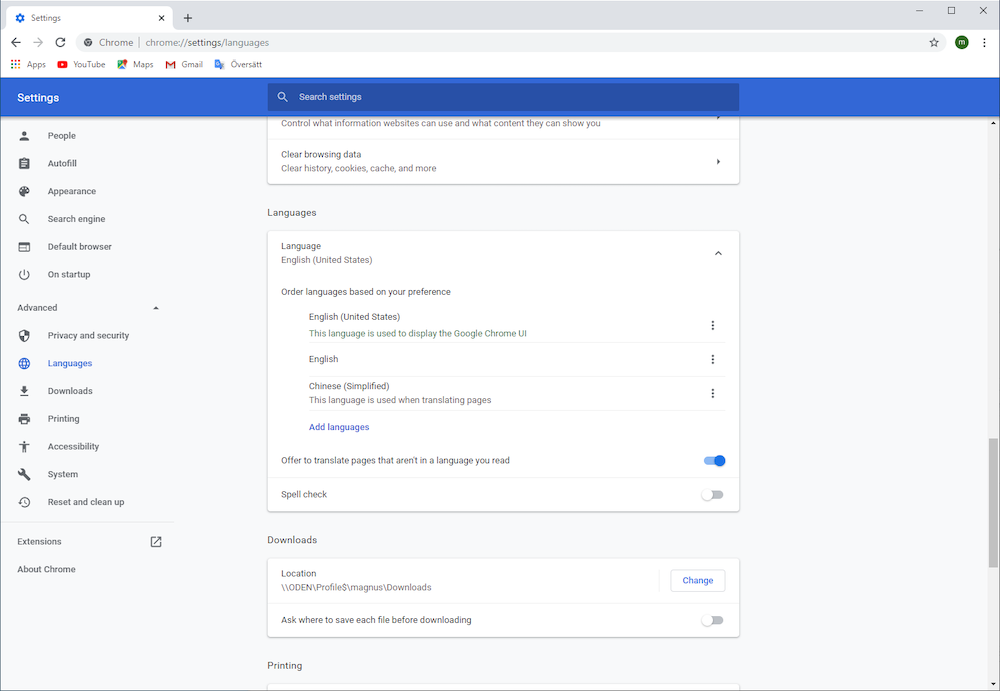
The Languages settings in the Google Chrome™ web browser.
If you then, for example, choose Help > Documentation from the File menu in COMSOL Desktop®, the COMSOL documentation set is available in a tab in the Google Chrome™ web browser. A page from the COMSOL Multiphysics Reference Manual is then displayed as in the following screenshot:
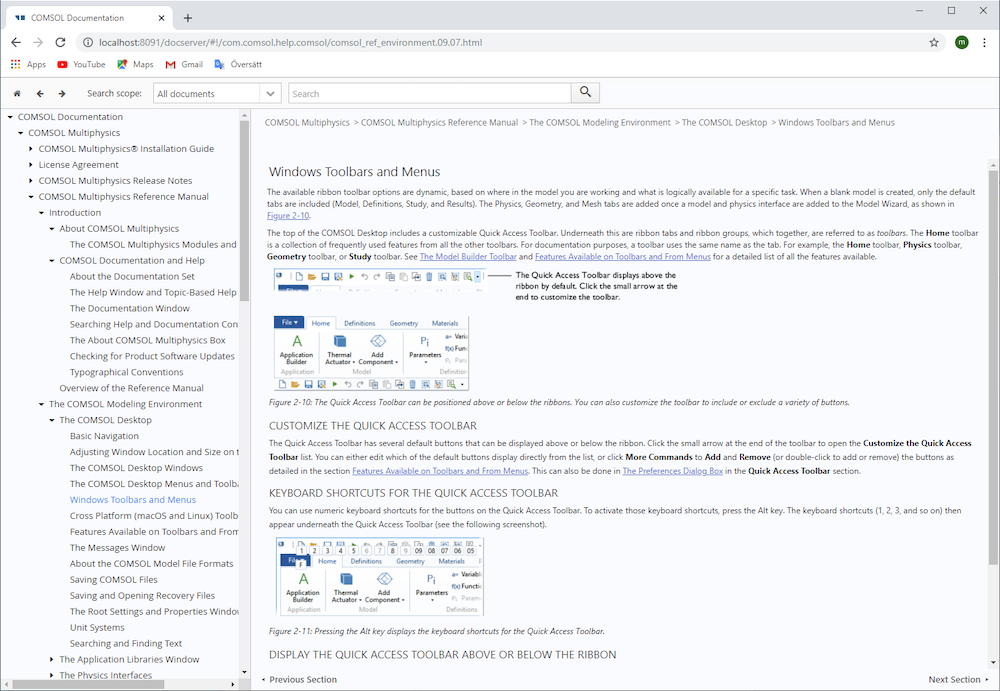
A page from the COMSOL Multiphysics Reference Manual displayed in its original form, which is in English.
If you want to translate the COMSOL documentation into Chinese, right-click anywhere on the webpage and choose Translate to 中文 (简体). The documentation on that page then appears in simplified Chinese:
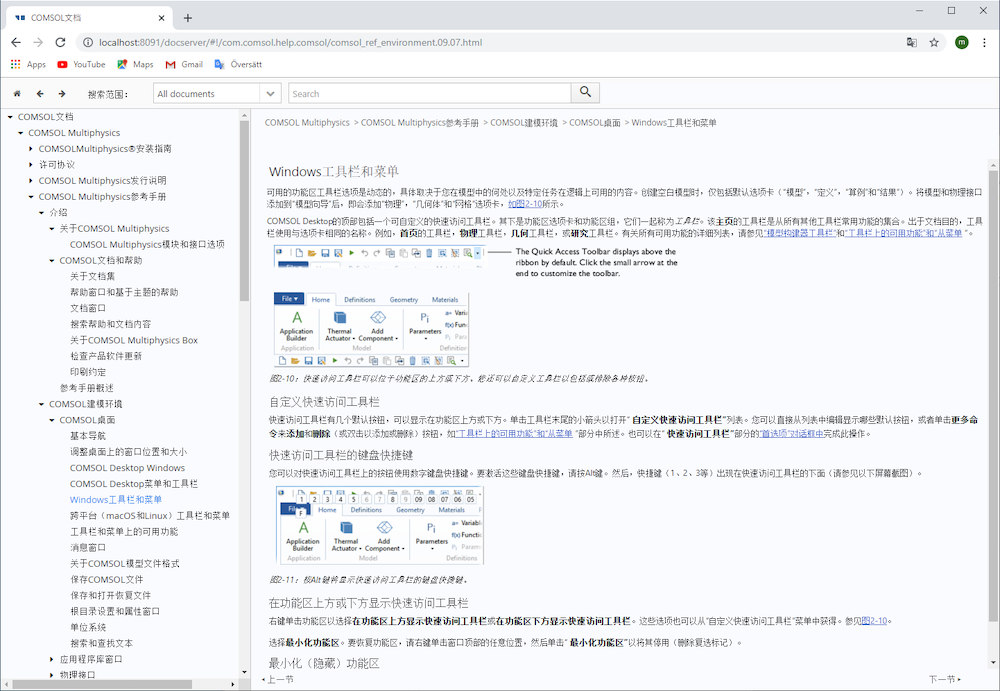
The same page, now translated into simplified Chinese.
Another option to display a COMSOL help page in the preferred browser, but with the default settings for displaying the help in an integrated Help window, is to click the Show in External Browser button, which is the rightmost button in the toolbar at the top of the Help window (the globe icon):
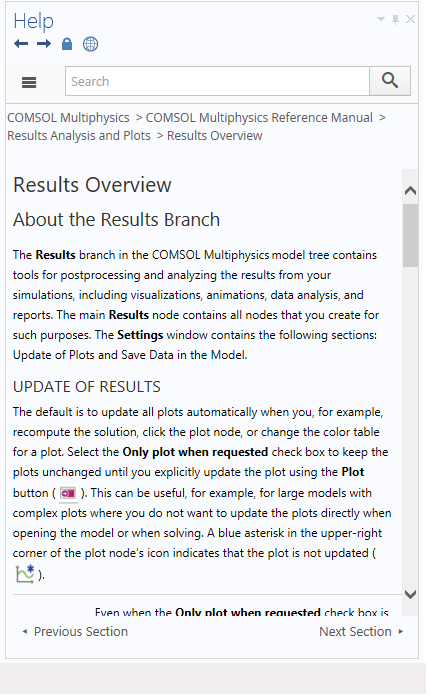
Click the Show in External Browser button to display this text in your preferred web browser.
Flexible Linguistic Options
This blog post has shown how you can take advantage of the possibilities in some web browsers to get an instant translation of the COMSOL documentation and help topics into the language of your choice. Doing so could improve your understanding of the COMSOL Multiphysics® software when your language of choice is not English. The settings for displaying the COMSOL documentation in any installed web browser make it easy to take advantage of such flexible and powerful translation services.
For more information about the help tools in COMSOL Multiphysics, see this blog post: Using the Help Tools in COMSOL Multiphysics® for Modeling Guidance.
Google Chrome is a trademark of Google Inc.




Comments (0)